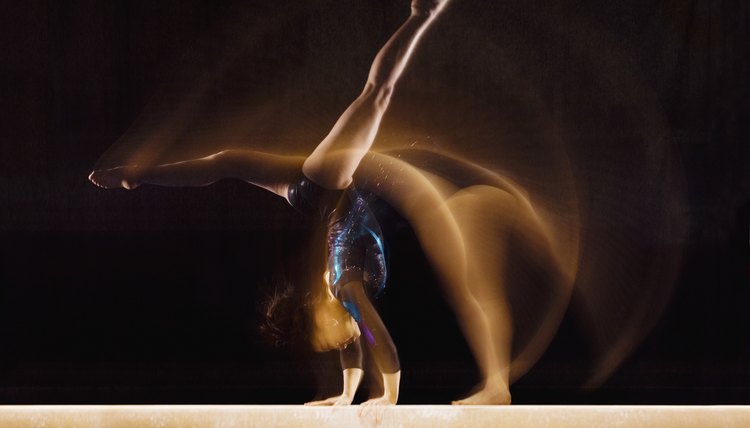What Is a Salto Move in Gymnastics?

Although salto is the impressive-sounding technical name, most people know this stunt as the flip. One of the most impressive stunts performed by gymnasts and one of the reasons many kids become attracted to gymnastics in the first place, the salto requires a combination of power, agility, speed and strength that takes years to develop. When done badly, it is potentially dangerous. But when performed well, it is one of the ultimate expressions of athletic prowess a body can demonstrate.
Salto and Variations
A salto is a flip performed around an imaginary axle drawn horizontally across the waist. The body must be in a tucked position as the legs go over the head, and the gymnast must stick the landing with her feet glued to the mat with no forward or backward sway. Saltos can be done to the front, back or sides, and although they are generally a floor exercise, they can be altered for use on various apparatus.
Levels
Saltos are generally introduced in Level 6 or Level 7 classes, when gymnasts begin to get comfortable with aerial stunts. Teachers normally begin with handspring drills to teach the gymnasts how to "pound" the floor to produce the power that helps them achieve the height and momentum to perform the salto safely, then the lesson progresses to a handspring/salto combination. The handspring provides extra momentum to keep the gymnast moving forward in case she doesn't get her feet over her head quickly enough. Stand-alone saltos are usually introduced on the trampoline and gradually worked up to on the floor. They require the gymnast to already be proficient at performing the move in combinations, because the lack of speed and momentum means that she must be able to get her feet up, around and back under her very quickly.
Apparatus
The salto is mostly a floor routine, but it can be used to mount or dismount apparatus as well, during optional competition. On the bars, what looks like a salto is usually a hip circle -- the difference being that instead of revolving around an imaginary axis, the gymnast is revolving around the bar and her arms are stationary. Saltos are frequently a part of balance beam routines, both as a mount or dismount and on the beam itself. The only difference is that the gymnast must land with her feet in line as opposed to square, like she would on the floor. The salto can also be performed as a vault, allowing the gymnast the added height from the springboard.
Optional Gymnastics
The salto figures heavily in optional competitive gymnastics. Level 7 requirements give the salto as a required bar dismount, an optional beam dismount and a required floor element. It becomes a scoring requirement as the competition level increases. Level 10 requirements allow the option of a salto bar and beam dismount, but the floor routine is stricter. The gymnast must perform either an acrobatic series with two saltos or two saltos in succession, three different saltos in the course of the routine and a salto with a minimum C-level, or moderate difficulty, as the last in her floor routine.
References
Writer Bio
Angela Brady has been writing since 1997. Currently transitioning to a research career in oncolytic virology, she has won awards for her work related to genomics, proteomics, and biotechnology. She is also an authority on sustainable design, having studied, practiced and written extensively on the subject.
